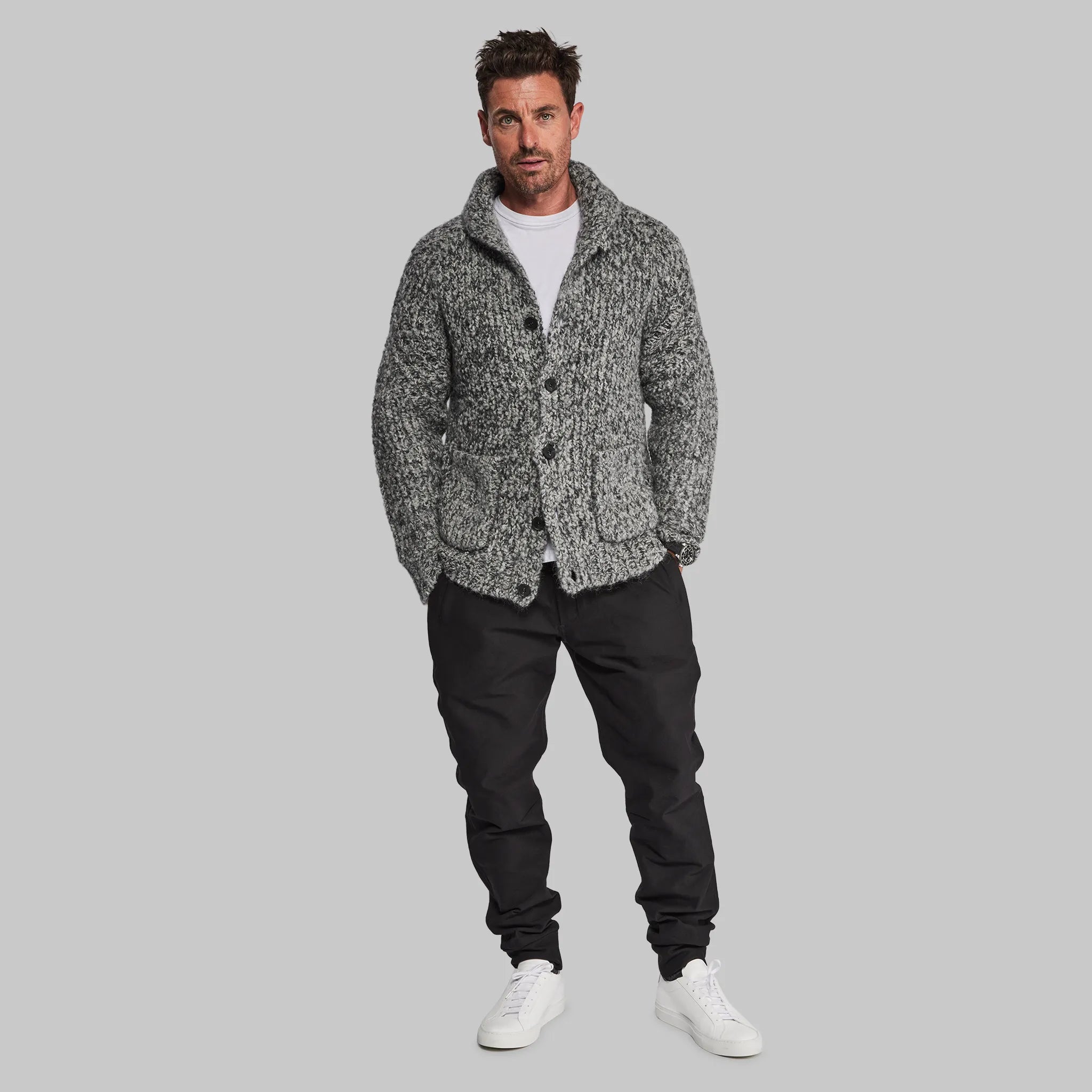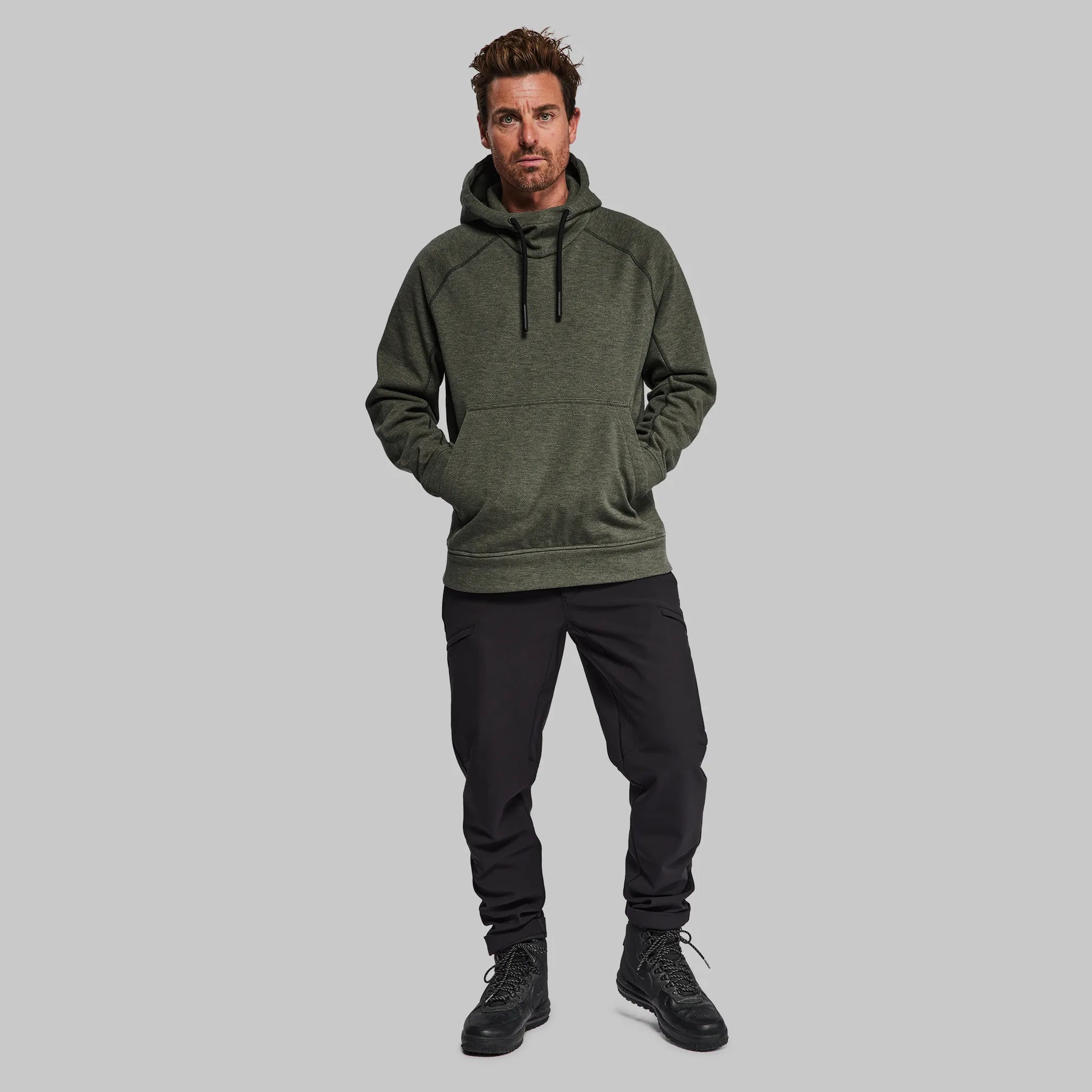Lumberjeans
Made from raw Japanese selvedge denim combined with ultra-tough aramid fibres.

- 14 oz. raw selvedge Japanese denim
- Material woven with aramid fibres for extreme strength
- Tough enough to survive 75kmph falls
The first ever pair of jeans were made for a lumberjack. Built for life in the woods, they were designed to be exceptionally tough – the strongest pants anywhere in the world at the time. But over the last 150 years, jeans have changed to the point where the original lumberjacks wouldn’t even recognise them. Skintight pants with premade rips are about as far away from the origin of jeans as you can get.
So we’ve gone back to the first days of jeans to build them as they were meant to be built. We’ve worked with the world’s most fabled mills and the master craftsmen of denim, and combined that with the toughest modern day materials to create some of the strongest jeans ever made. The Blue edition is made with high-strength raw denim, spun on low-speed looms to create the tightest possible weave, then woven with aramid fibre which is stronger than steel, and reinforced with Cordura panels. They’re the jeans lumberjacks would have wanted.
Technical Details

Rebuilding jeans as tough as they were meant to be
Over the last 150 years, jeans have changed to the point where the original lumberjacks wouldn’t even recognise them. So we’ve gone back to the first days of jeans to build them as they were meant to be built. We’ve worked with the world’s most fabled mills and materials, alongside the master craftsmen of denim, and combined that with the toughest modern day materials to create some of the strongest jeans ever made. We’re going to break the Blue edition down into the three key parts. We’ll start by looking at raw denim, before moving onto what selvedge denim is and how it’s made, then we’ll get into the aramid fibres and Cordura reinforcement.



Tough enough to survive 75kmph falls
While raw selvedge denim woven with aramid fibres is insanely tough on its own, we’ve also taken the three typical failure points in jeans and made them even stronger. We’ve lined the seat of the jeans and both knees with a layer of Cordura – a high tenacity Nylon with extremely high abrasion resistance. During lab testing we recreated a 75kmph fall and drag on concrete, and the knees and seat survived without a single hole appearing. The rest of the jeans easily passed at 45kmph too, making these some of the toughest jeans ever made.


The very first pair of jeans was made for a lumberjack
While workwear became fashionable in the 1990s, in the 1880s lives depended on it. Although jeans later became synonymous with cowboys – and later still with bikers, outlaws and rock stars – the very first pair of jeans was made for a lumberjack. In December 1870 a woman walked into a tailor’s shop in Nevada. She was at the end of her tether. She needed a pair of pants for her husband. They needed to be tough. And they needed to be made quickly. The husband was off work sick, and he had to be back chopping wood by January.


SIze + Fit
The Lumberjeans are designed with a slim fit.
Getting the right size in a pair of raw denim jeans used to be difficult. Since the denim hadn’t been pre-washed, it would shrink by up to 15% the first time you would wash it at home. So people would buy their jeans a size bigger than they needed, then wash them to get the correct fit. This is called shrink to fit. But the Raw edition of the Lumberjeans goes through a process called ‘sanforization’ where the denim is treated with steam to reduce shrinkage after the first wash. It means you can just pick up the jeans in your regular size, and you’re good to go. If you’re on the borderline between two waist sizes, we recommend going for the larger size.
| Size | 28 | 30 | 32 | 34 | 36 | 38 |
| Fits waist | 71 - 76 | 76 - 81 | 81 - 86 | 86 - 91 | 91 - 96 | 96 - 101 |
| Inside leg | 82.6 | 83.8 | 85 | 86.4 | 86.4 | 86.4 |
| Size | 28 | 30 | 32 | 34 | 36 | 38 |
| Fits waist | 28 - 30 | 30 - 32 | 32 - 34 | 34 - 36 | 36 - 38 | 38 - 40 |
| Inside leg | 32.5 | 33 | 33.5 | 34 | 34 | 34 |






















